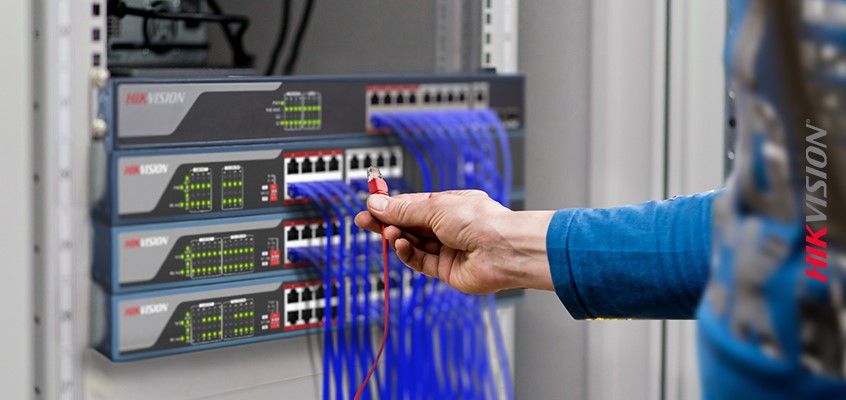Hikvision EI Smart Managed Switches Make Remote Management Easier and More Cost-Effective
Unique Visual Topology Provides 2D Layout of Networked Devices

City of Industry, Calif. (June 15, 2021) – Hikvision, a world-leading manufacturer and supplier of security products and solutions, now offers a line of smart PoE switches designed to simplify installation, remote management, and system maintenance. The new Hikvision EI Smart Managed Switch portfolio includes a host of unique features including advanced visualized topology, network health monitoring and real-time alarm notifications.
“Our new EI Smart Managed Switch offering combines the ideal combination of performance, functionality and cost-efficiency to best manage new or expanded networked systems,” said John Xiao, Vice President Marketing, Hikvision USA.
“Designed specifically for professional surveillance and security applications, our new EI Smart Switches can help reduce system downtime by providing system administrators with advanced health monitoring and notification features.”
The new IEEE 802.3af, IEEE 802.3at PoE compatible Hikvision EI Smart Managed Switches are available in 4, 8, 16, or 24 port configurations rated at 100 Mbps. Key features include:
Visual Topology Management, which provides a unique 2D visual layout of networked devices when used with Hikvision’s iVMS-4200 or HikCentral camera and system management platforms. The visual topology feature provides administrators with a convenient view of their entire network of connected devices, making systems easier to build and maintain.
Network Health Monitoring allows system administrators to view the real-time bandwidth of the network and device details at both ends.
Real-Time Alarms and Notifications significantly reduce network operation and maintenance costs by automatically notifying system administrators when network bandwidth exceeds predetermined thresholds. The affected camera tile will also turn red on the visual topology in the event transmission is interrupted.
For more information on Hikvision EI Smart Managed Switch series:
Register for the upcoming webinar on June 25th here:
https://register.gotowebinar.com/register/5155587348127486477
Or visit:
About Hikvision
Hikvision is a world leading manufacturer and supplier of security products and solutions. Featuring an extensive and highly skilled R&D workforce, Hikvision manufactures a full suite of comprehensive products and solutions for a broad range of vertical markets. In addition to security, Hikvision extends its reach to smart home tech, industrial automation, and automotive electronics industries. Hikvision solutions provide powerful business intelligence for end users, which can enable more efficient operations and greater commercial success. Hikvision encourages partners to take advantage of its many cybersecurity resources, such as the Hikvision Cybersecurity Center. For more information, please visit us at www.hikvision.com.
# # #
Press Contact
Ryan LaMarca / MediaMax Services
845-358-1801
